Efficient Real-Time MySQL to Redis Data Synchronization with Database Replication Tool

Introduction
This article delves into the smooth and efficient transfer of data from MySQL to Redis, with a specific focus on real-time synchronization and the utilization of a database replication tool. The seamless transition of data between these two platforms is crucial for maintaining accuracy and consistency in data storage and retrieval processes. By exploring the methods and tools available for this purpose, we can ensure a reliable and efficient data synchronization process.
Introduction to MySQL
MySQL is a widely used open-source relational database management system (RDBMS) that plays a crucial role in the management of data for various applications and websites. It provides a robust platform for storing, accessing, and managing structured data efficiently.
MySQL Database Overview
MySQL serves as a reliable and scalable database solution, offering support for multiple storage engines to accommodate diverse data processing requirements.
Its architecture allows for seamless integration with different programming languages and frameworks, making it a versatile choice for developers and businesses alike.
Key Features of MySQL
Data Security: MySQL ensures data security through features such as user authentication, encryption, and access control mechanisms.
Scalability: The ability to handle large volumes of data and scale horizontally makes MySQL suitable for growing businesses and applications.
High Performance: With its optimized query execution and indexing capabilities, MySQL delivers high performance for data retrieval and manipulation tasks.
By understanding the fundamental aspects of MySQL's architecture and key features, we can appreciate its relevance in facilitating efficient data synchronization processes.
Introduction to Redis
Redis Database Overview
Redis, often referred to as a "data structure server," is an open-source, in-memory data storage and retrieval tool. It is designed for high-performance handling of data and offers support for various data structures such as strings, hashes, lists, sets, and more.
The architecture of Redis allows for exceptionally fast read and write operations, making it ideal for real-time data synchronization requirements.
With its ability to persist data on disk and support advanced features like replication and clustering, Redis provides a reliable and scalable solution for efficient data storage and retrieval.
Advantages of Redis
In-Memory Data Storage: By storing data in memory, Redis ensures lightning-fast access to information without the latency associated with disk-based databases.
Real-Time Data Processing: The speed and efficiency of Redis make it well-suited for real-time data synchronization needs, enabling seamless transfer of information between systems.
Support for Data Structures: Redis's support for various data structures allows for versatile usage scenarios, from caching to message brokering and beyond.
Redis serves as a powerful tool for real-time data synchronization due to its high performance, versatility, and robust feature set. Its unique capabilities make it an excellent choice for integrating with MySQL to achieve efficient real-time data synchronization.
Why Replicate Data from MySQL to Redis
Importance of Real-Time Data Synchronization
Real-time data synchronization between MySQL and Redis holds immense significance in the realm of data management. The instantaneous transfer of data ensures that the information stored in MySQL is promptly mirrored in Redis, allowing for consistent and up-to-date access across platforms. This real-time synchronization is particularly vital for applications and systems that rely on instant data updates to provide accurate insights or functionality.
The importance of real-time data replication can be highlighted in scenarios such as financial transactions, where immediate updates are crucial for maintaining transaction integrity and ensuring accurate reporting. Additionally, real-time synchronization is essential for applications that involve user interactions, as it enables seamless and instantaneous updates to user profiles, preferences, or activity logs.
By embracing real-time data synchronization, businesses can enhance the overall user experience by providing instant access to the latest information while also ensuring the reliability and consistency of their data-driven operations.
Benefits of Database Replication
Data Redundancy: Database replication facilitates the creation of redundant copies of data in Redis, thereby enhancing fault tolerance and disaster recovery capabilities. In the event of a system failure or data loss, these replicated copies serve as backups to safeguard critical information.
Load Distribution: By replicating data from MySQL to Redis, businesses can distribute read operations across multiple instances of Redis, thereby reducing the load on the primary database server. This enhances overall performance and scalability while optimizing resource utilization.
Enhanced Availability: Real-time database replication ensures that Redis contains an up-to-date copy of MySQL's data at all times. This high availability minimizes downtime and latency issues by enabling seamless failover to Redis in case of disruptions in the primary database system.
The benefits offered by database replication underscore its role in streamlining data transfer processes while fortifying the resilience and performance of the overall system.
real-time data synchronization: Achieving real-time synchronization between databases enables instantaneous updates across platforms.
How to Replicate Data from MySQL to Redis
Understanding the Process
To replicate data from MySQL to Redis, a systematic approach is essential to ensure seamless and accurate data transfer. The following steps outline the process of replicating data from MySQL to Redis:
Database Replication Tool Selection: Choose a reliable and efficient database replication tool that supports real-time data synchronization between MySQL and Redis. Evaluate the features and compatibility of the tool with your specific database environment.
Configuration Setup: Configure the selected replication tool to establish a connection between the MySQL database and the Redis instance. Define the source and target databases, specifying the tables or data sets to be replicated.
Data Mapping and Transformation: Map the structure of data in MySQL to match the corresponding data structures in Redis. This step involves transforming the format, if necessary, to ensure compatibility between both databases.
Synchronization Frequency: Determine the frequency of data synchronization based on your application's real-time requirements. Set up periodic intervals for automatic synchronization or opt for continuous real-time replication based on your specific use case.
Monitoring and Error Handling: Implement monitoring mechanisms to track the replication process, detect any discrepancies or errors, and handle them promptly. Establish alerts for failed sync attempts or inconsistencies in replicated data.
Comparison with Manual Methods
When comparing using a database replication tool versus manual setup for data replication from MySQL to Redis, several key differences become evident:
Efficiency: A database replication tool automates the entire process, ensuring efficient and consistent data transfer in real time or near-real time. In contrast, manual methods require meticulous attention to detail and are prone to human error.
Complexity: Manual setup involves writing custom scripts or queries for data extraction, transformation, and loading (ETL), which can be complex and time-consuming. Database replication tools simplify this process through intuitive interfaces and predefined configurations.
Maintenance Overhead: Utilizing a database replication tool reduces ongoing maintenance efforts as it streamlines updates and ensures synchronization without manual intervention. Manual methods may require constant monitoring and adjustment as systems evolve.
By leveraging a database replication tool, businesses can achieve reliable, efficient, and automated data synchronization from MySQL to Redis while minimizing manual effort and potential errors.
Method 1: MySQL to Redis Using Tapdatga
Introduction to Tapdata
Tapdata is a robust data replication tool that facilitates seamless and efficient synchronization of data from MySQL to Redis. Its features and benefits make it an ideal choice for businesses and developers seeking reliable real-time data transfer capabilities.
Efficient Data Replication: Tapdata offers a streamlined approach to replicating data, ensuring that changes in the MySQL database are promptly reflected in the Redis instance. This efficiency is crucial for maintaining up-to-date information across platforms.
Real-Time Synchronization: With Tapdata, real-time synchronization becomes a reality, enabling instantaneous updates in Redis as soon as changes occur in MySQL. This instantaneous transfer of data supports applications requiring immediate access to the latest information.
Intuitive Configuration: The implementation of Tapdata involves user-friendly configuration processes, allowing for seamless setup and management of data replication tasks. Its intuitive interface simplifies the overall process, reducing complexity and potential errors.
Tapdata: A powerful tool for real-time data synchronization, offering efficiency and reliability in transferring data from MySQL to Redis.
Implementation Process
Implementing Tapdata for efficient data replication involves the following steps:
Step1
Connect to the MySQL database: Configure Tapdata to establish a connection with your MySQL database. Provide the necessary credentials and connection details.
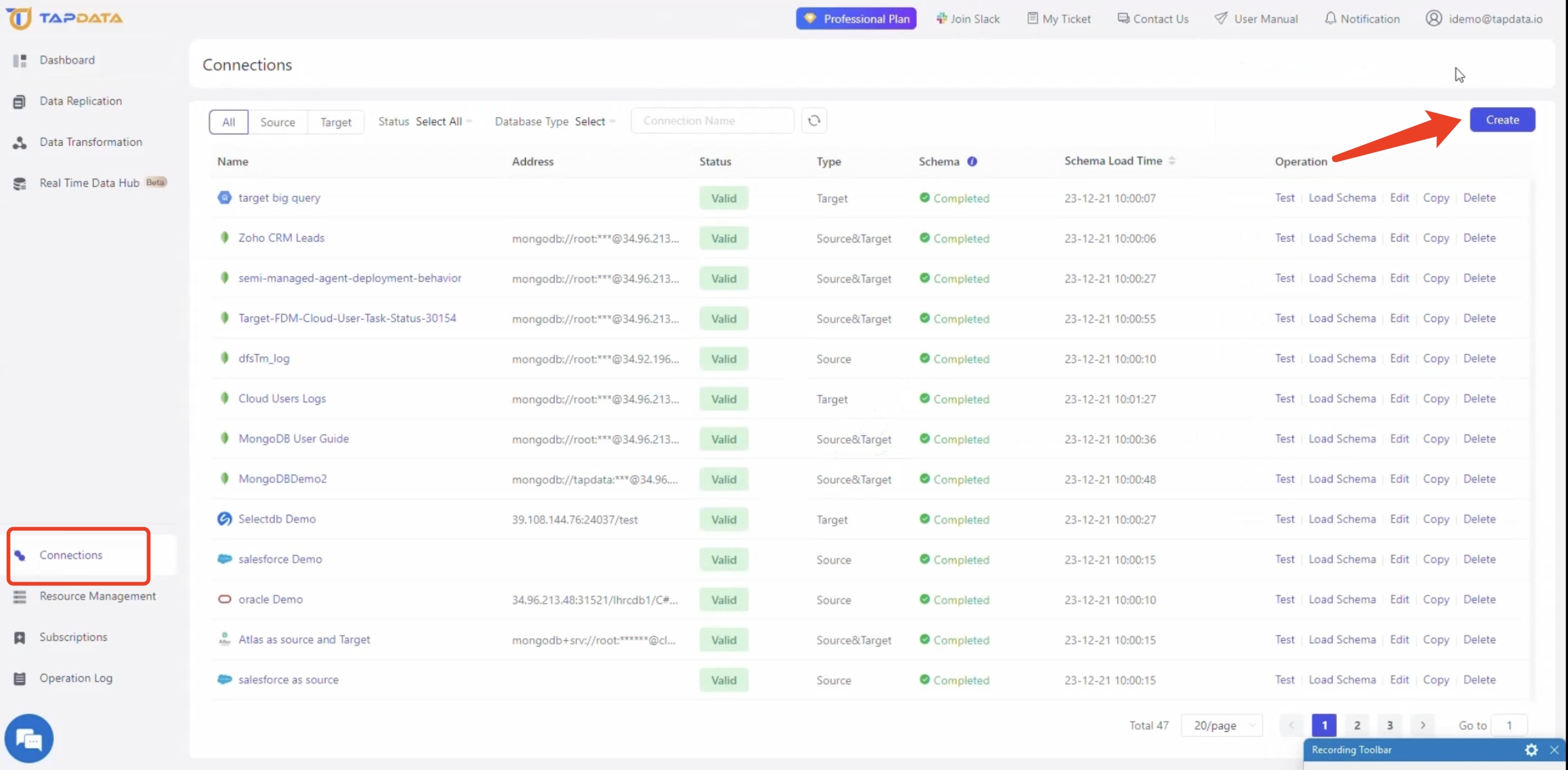
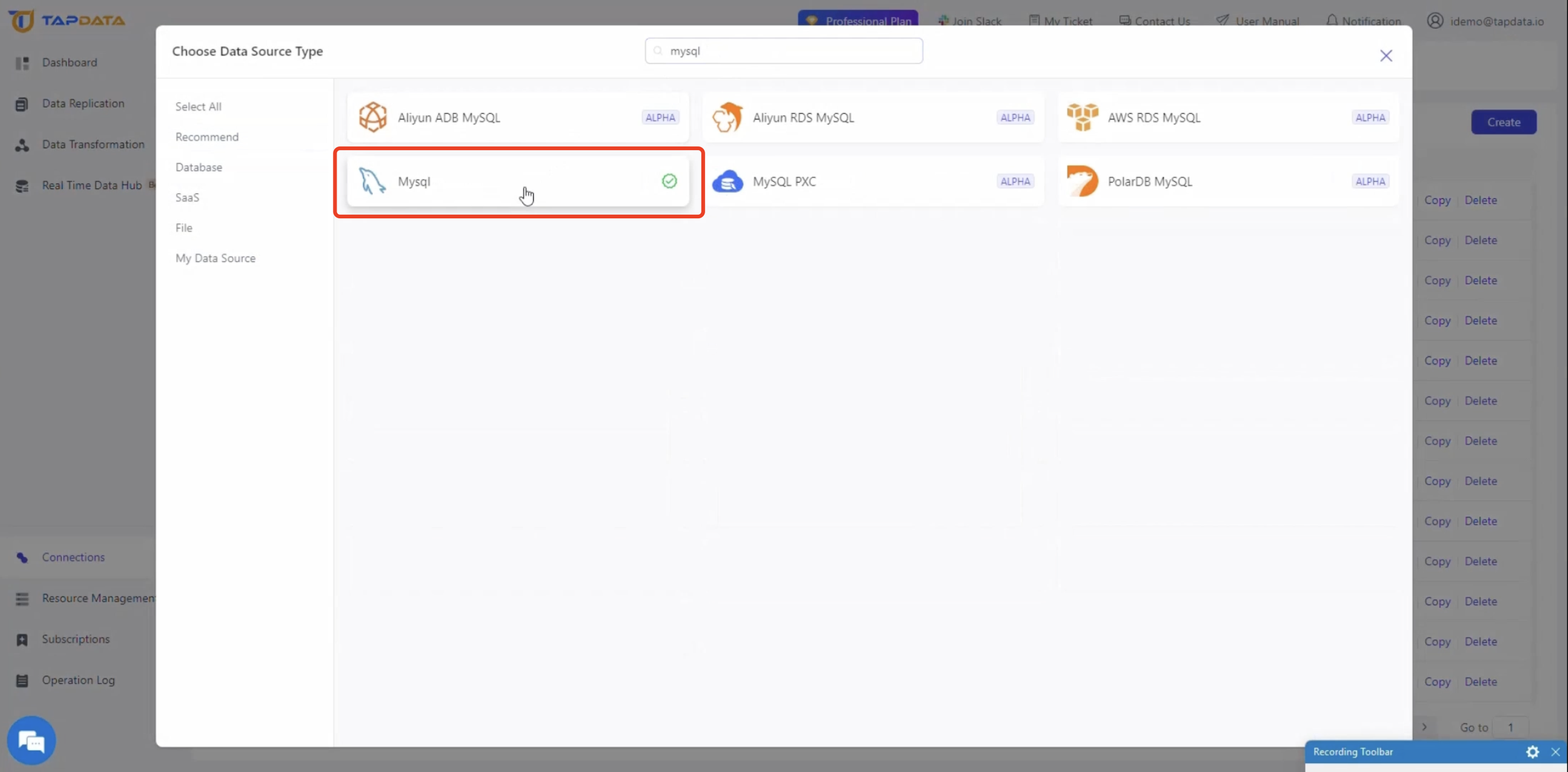
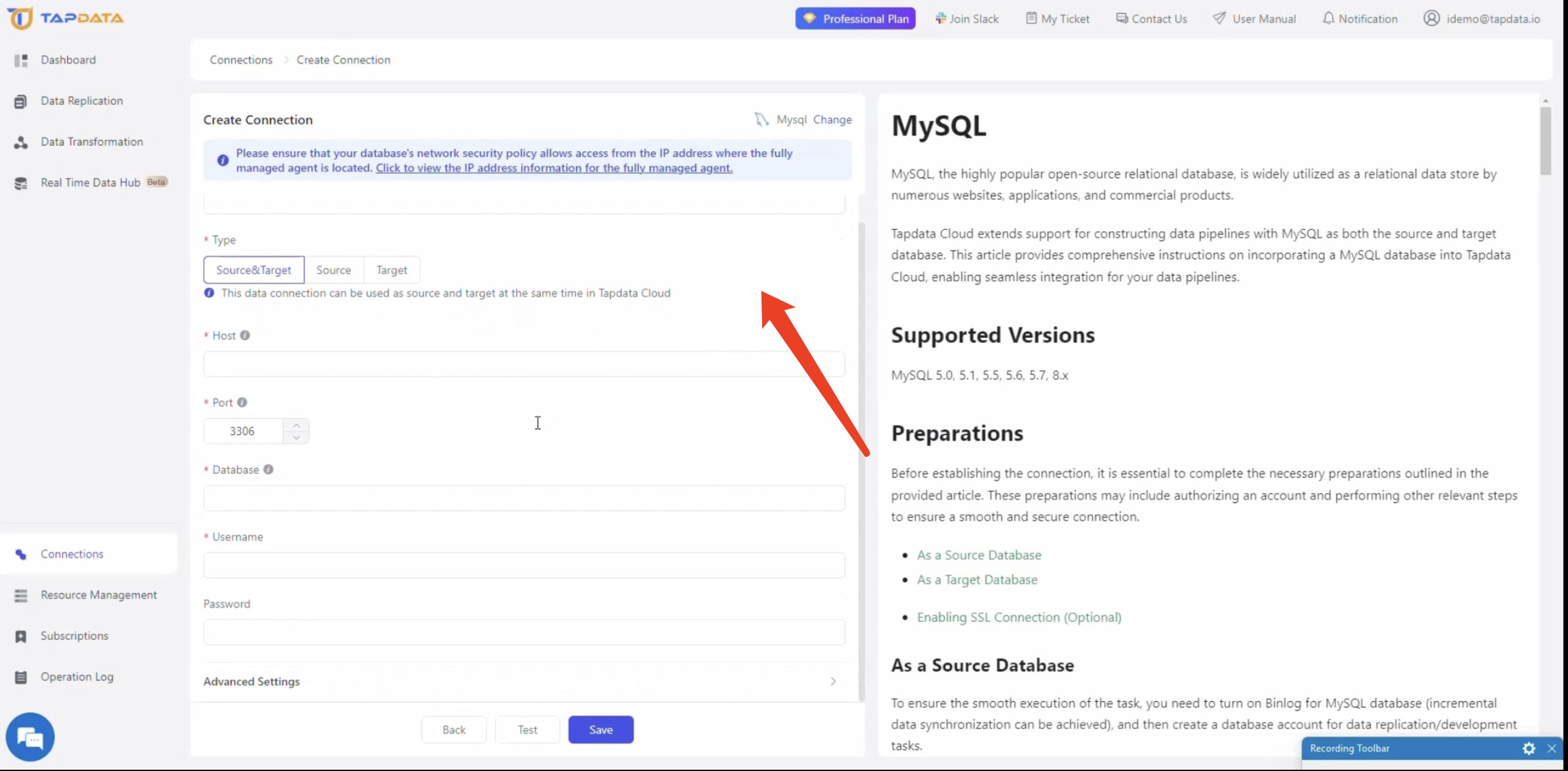
Step2:
Configure the Redis destination: Set up the Redis destination where you want to sync your MySQL data.
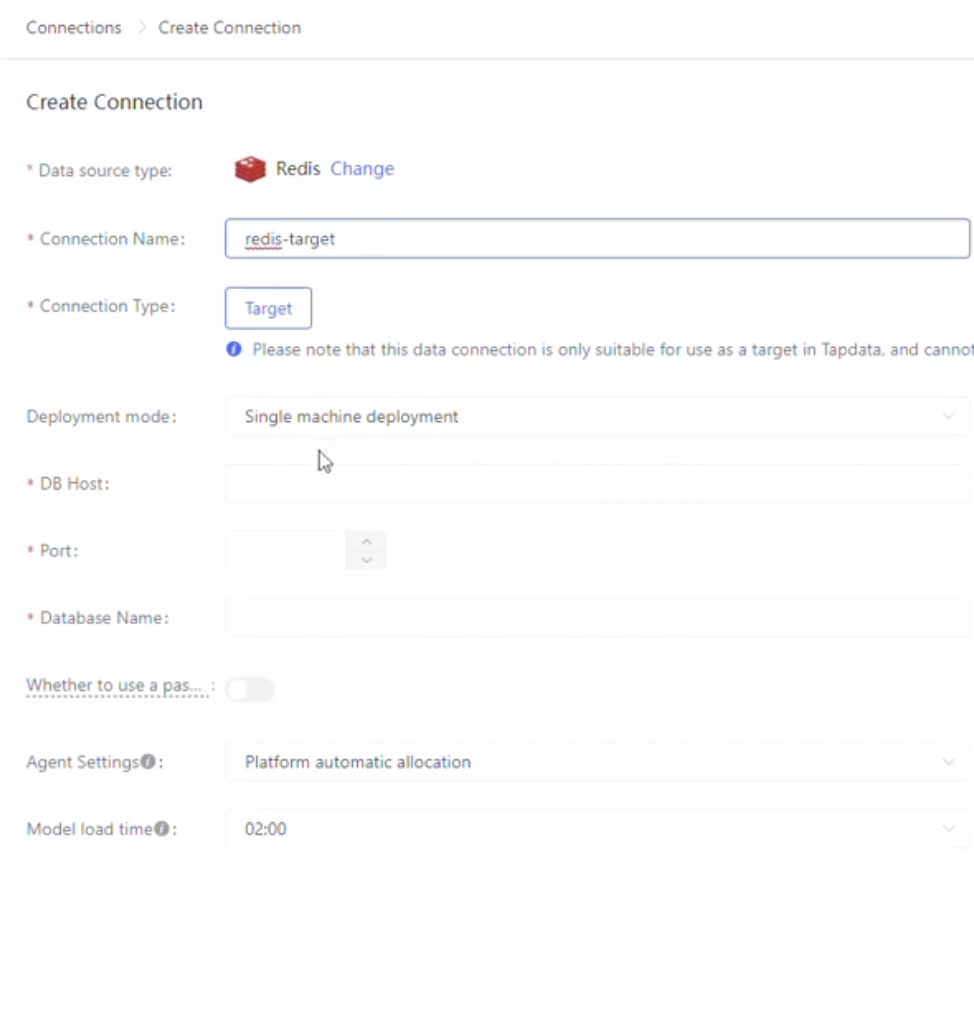
Step3:
Set up replication tasks: Create replication tasks in Tapdata, specifying which tables or documents from MySQL need to be synced with Redis. You can choose between one-time migrations or continuous real-time syncing.
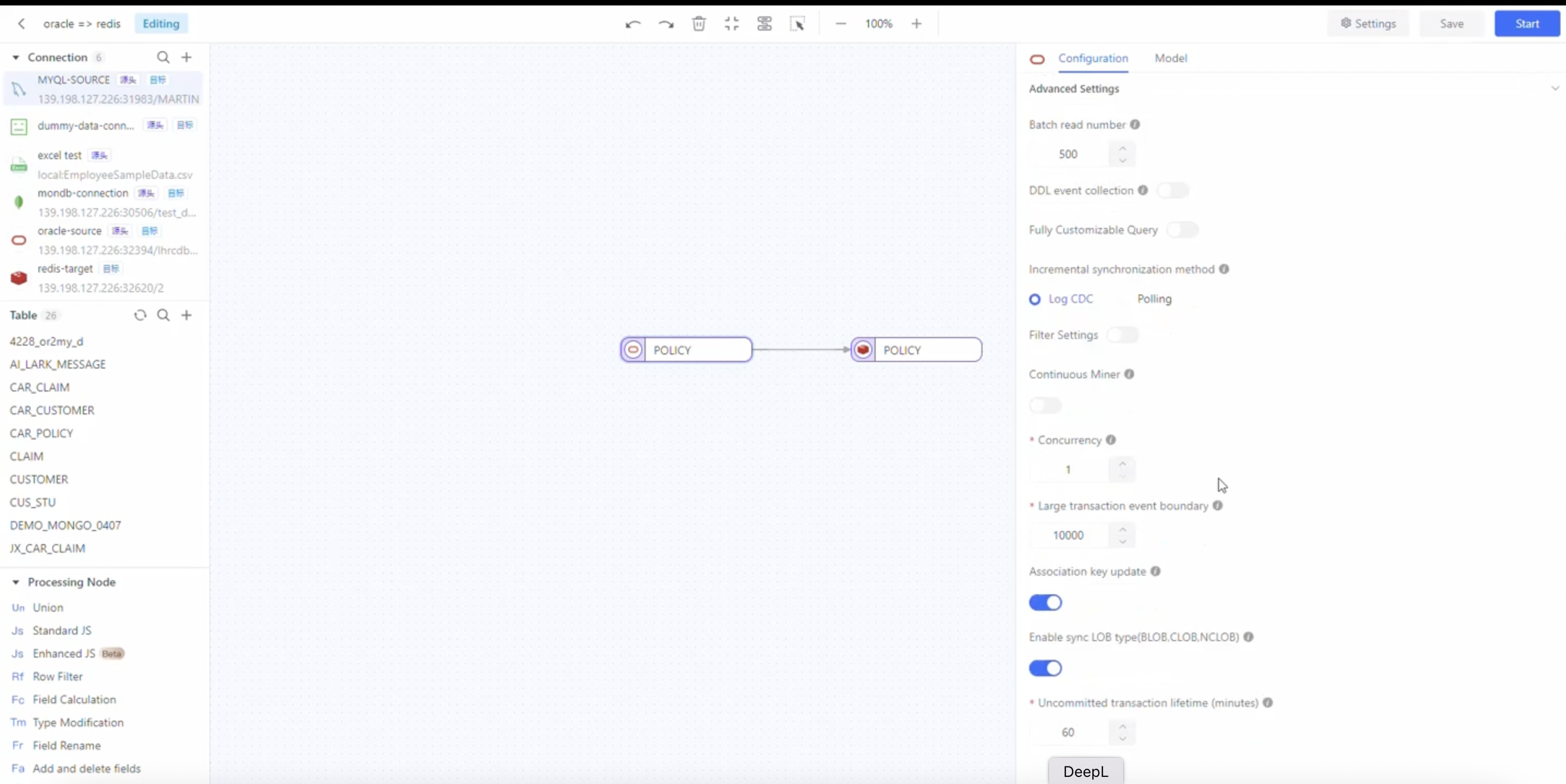
Utilize Tapdata's monitoring capabilities to track the replication process in real time, ensuring that any discrepancies or errors are promptly identified and addressed.
By leveraging Tapdata, businesses can achieve reliable and efficient real-time synchronization from MySQL to Redis, empowering them with accurate and up-to-date data across their systems.
Method 2: MySQL to Redis Manually
Manual Data Replication Process
When opting for manual data replication from MySQL to Redis, the process involves a hand-operated data transfer approach that lacks the automated efficiency of database replication tools. The manual method typically requires writing custom scripts or queries to extract data from MySQL, transform it as necessary, and then load it into Redis.
The manual data synchronization process entails meticulous attention to detail, as developers and database administrators must ensure the accuracy and consistency of the replicated data. This includes mapping the structure of data in MySQL to align with the corresponding data structures in Redis, a task that demands precision and thorough understanding of both databases.
Additionally, manual data replication often involves setting up scheduled jobs or scripts to initiate periodic synchronization, which can be complex and time-consuming. Monitoring and error handling become crucial aspects of the manual process, requiring vigilant oversight to detect any discrepancies or failures in the replication workflow.
Challenges and Limitations
The manual approach to replicating data from MySQL to Redis presents several challenges and limitations that impact its efficiency and reliability. Some of these include:
Complexity: Writing custom scripts for extraction, transformation, and loading introduces complexity into the replication process, making it prone to errors and inconsistencies.
Maintenance Overhead: Manual methods require ongoing maintenance efforts as changes in database structures or business requirements may necessitate frequent adjustments to the replication logic.
Scalability Constraints: As datasets grow larger, manual methods may struggle to handle the increasing volume of data efficiently, potentially leading to performance bottlenecks.
Error Prone: Due to its reliance on human intervention, manual data replication is susceptible to human errors during setup, configuration, and monitoring phases.
While manual data replication provides a basic approach for transferring data between MySQL and Redis, it is fraught with complexities and limitations that hinder its suitability for real-time synchronization needs.
Conclusion
In summary, establishing efficient real-time synchronization of data from MySQL to Redis using a reliable database replication tool is paramount for ensuring seamless and dependable data transfer. By leveraging the capabilities of a robust data synchronization tool, businesses can maintain the accuracy and consistency of their data across platforms, thereby enhancing overall operational efficiency.
This blog has provided insights into the significance of real-time data synchronization, the advantages offered by database replication, and the methods available for achieving efficient MySQL to Redis data synchronization. Whether through automated tools or manual processes, the emphasis on real-time data synchronization underscores its critical role in modern data management practices.
By embracing advanced database replication solutions, organizations can optimize their data transfer processes while fortifying their systems with resilient and high-performance real-time synchronization capabilities.
See Also
Synchronizing MySQL Data to Redis in Real Time via Database Replication Tool
Utilizing Tapdata Cloud to Achieve Real-Time MySQL Data Sync with BigQuery
The Significance of Real-Time Data Duplication in AI Apps with Tapdata LDP

